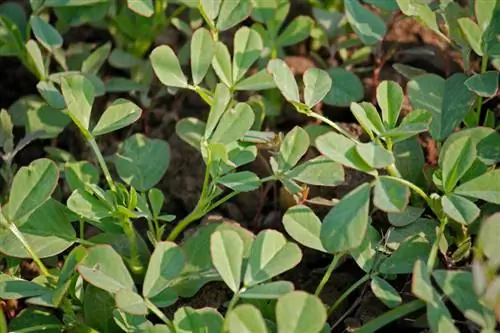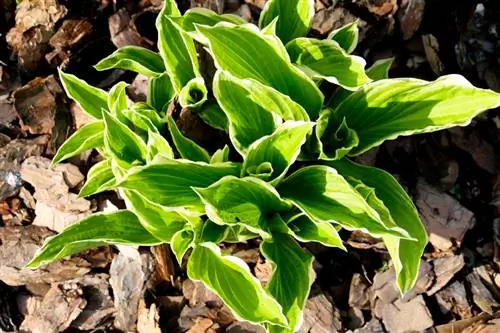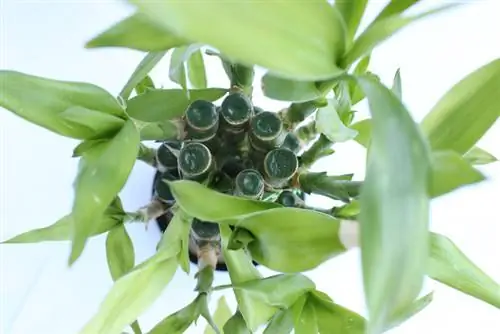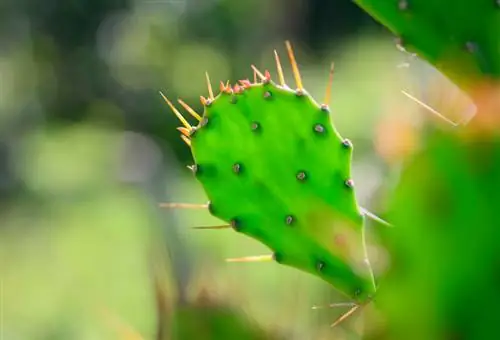- Author admin [email protected].
- Public 2023-12-16 16:46.
- Last modified 2025-01-23 11:20.
Fenugreek (Trigonella foenum graecum), also known as Greek hay or cowhorn clover, has been cultivated as a food, medicinal and spice plant for around 5,000 years. Fenugreek is also grown commercially for German consumption, especially in India and in many Asian and Arabic countries, but it can also be grown in your own garden for domestic kitchen use. In the following article you will find out how it works.
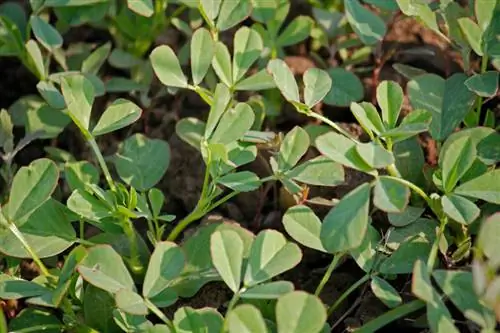
How can you grow fenugreek yourself?
Fenugreek can be grown in your own garden by choosing a sunny, dry location and loamy soil, sowing directly outdoors between April and June, caring for the plants and harvesting leaves or seeds after 6-12 weeks Spice can be used.
Selection of the site and preparation of the soil
Due to its origins in Asia Minor, the annual fenugreek prefers a sunny, dry and protected location. The soil should be loamy and also rather dry. In addition, the planting substrate should not contain too much nitrogen, which is why starting fertilization with fertilizers that contain a lot of nitrogen (especially horn shavings, manure and compost) should be avoided. Dig the soil thoroughly and use a rake to break up the soil as finely as possible.
Sowing and caring for fenugreek
Fenugreek is best sown directly outdoors between April and June (or later if the weather is unfavorable); it is not necessary to bring it forward. Draw rows about 20 centimeters apart in the planting bed; even the relatively large seeds are planted at the same distance. Since it is a dark germinator, the fenugreek should be planted about one centimeter deep in the soil. The substrate should be kept evenly moist, but never wet, until germination. You can also protect the sown area from predatory birds. The plant blooms between June and July.
Harvesting and using fenugreek
The seedlings called sprouts can be harvested just a few days after the seeds emerge and eaten raw or as a vegetable. The leaves can be used after about six weeks and the seeds after twelve weeks (between August and September). The very intensely tasting seeds in particular should only be used sparingly and are therefore best suited for spice mixtures. It is not for nothing that fenugreek is an essential ingredient in various Indian curry mixtures. The leaves can also be dried and used as a spice for soups, stews, baking bread and cheese dishes.
Tip
Fenugreek is considered a crop producer because it also grows on highly salinized soils and not only tolerates the high s alt concentrations, but also removes the s alt from the soil.

